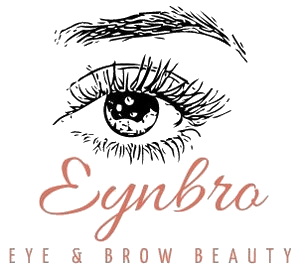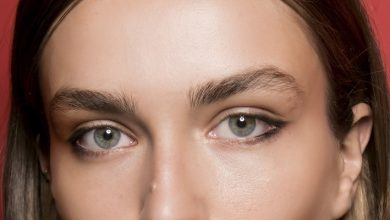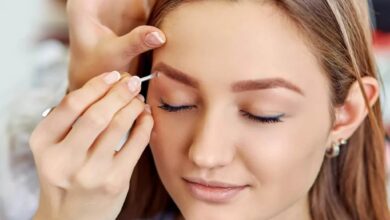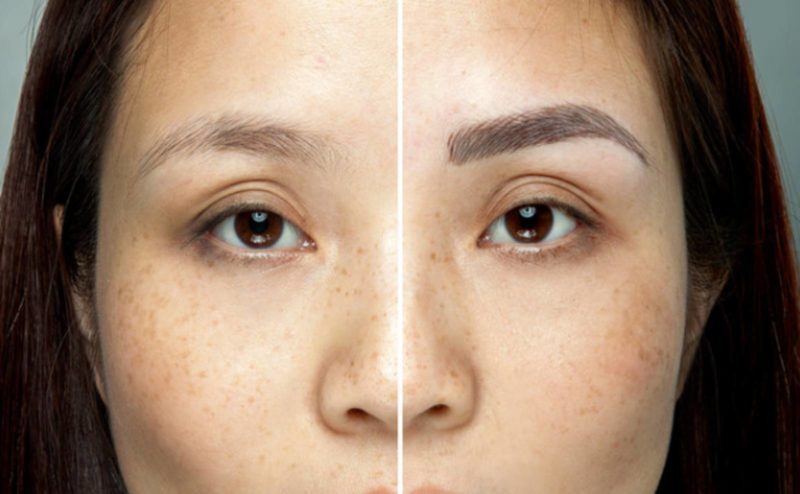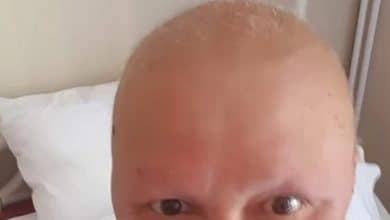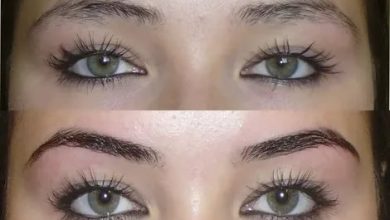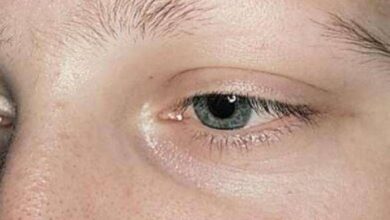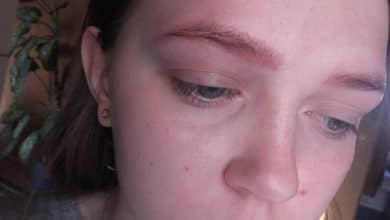How to treat allergic reaction to eyebrow tint?
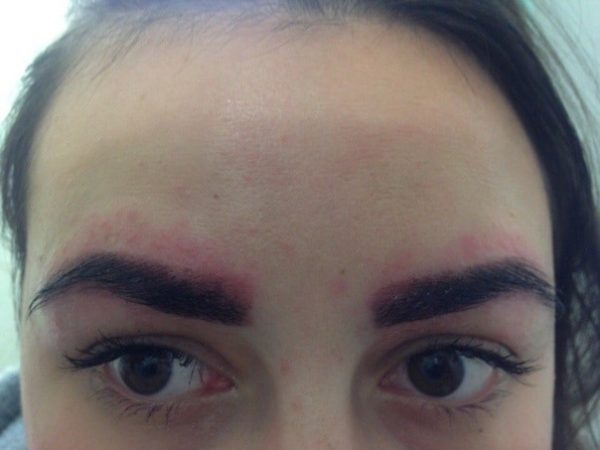
Many components in brow hair dye products might irritate the skin and cause allergic reactions. The most common cause of allergic contact dermatitis from hair dye exposure is a chemical called paraphenylenediamine (PPD). The PPD-rich hair colors are the most prone to induce adverse responses. Some hair dyes contain phrases like “natural” or “herbal” on their cartons, which might be misleading.
What can I use for an allergic reaction on my eyebrows?
A doctor may prescribe a topical treatment for itchy eyebrows. Treatment will depend on the cause of the allergic reaction to eyebrow tint : People can treat mild seborrheic dermatitis with an antifungal cream or a medicated shampoo. More severe cases may require corticosteroid medication or antifungal pills.

You can treat your symptoms at home using a variety of approaches. Consider one of the following options:
- If you have an initial, mild response to the dye, rinse it off with warm water and a light soap or shampoo right away.
- To treat the damaged area, use a potassium permanganate solution. This may aid in the complete oxidation of PPD. When PPD is partially oxidized, it merely produces allergic reactions.
- Use an over-the-counter topical corticosteroid cream to relieve symptoms of contact dermatitis, such as redness or itching. These creams are safe to use on the face, neck, and other regions of the body, but not on the eyes or mouth.
- Apply shampoos containing topical corticosteroids to your scalp, such as Clobex.
- Apply hydrogen peroxide to the area. This is a gentle antiseptic that can relieve inflammation and blisters while also calming the skin.
- To help minimize skin irritation and itching, take an antihistamine such Benadryl.
How long does allergic reaction to eyebrow tint last ?
They may take a few hours to a few days to disappear. If the exposure to the allergen continues, such as during a spring pollen season, allergic reactions may last for longer periods such as a few weeks to months. Even with adequate treatment, some allergic reactions may take two to four weeks to go away.
Use shampoos containing topical corticosteroids, such as Clobex, on your scalp. Apply hydrogen peroxide. It’s a mild antiseptic and may help calm the skin and reduce irritation and blistering. Take an oral antihistamine, such as Benadryl, to help reduce skin inflammation and itching.
- Determine the source of the allergic reaction and avoid the allergen at all costs.
- Bathe in cool or lukewarm water using fragrance-free, mild cleansers. To help relieve discomfort, you can also take relaxing baths with colloidal oatmeal.
- To calm the skin, apply a light, hypoallergenic moisturizer just after showering.
- Apply an over-the-counter corticosteroid cream twice a day on inflamed skin. Calamine lotion and other ointments can also be used to ease symptoms.
- To ease symptoms, take allergy drugs (antihistamines), but read the label carefully because many of these treatments can induce drowsiness.
- To ease discomfort and avoid scratching, apply cool, damp compresses to the affected region.
- To avoid further aggravation, dress in loose, breathable clothing.
What are people allergic to in tint?
Many permanent and some semi-permanent hair dyes contain a chemical called paraphenylenediamine (PPD), which is a known irritant and allergen. This is the culprit of most reactions to hair dye.Dyeing hair seems to come naturally to many people as they age, but it could be the cause of an allergic reaction, no matter how long you’ve been using the same product, according to a dermatologist at Baylor College of Medicine.
Even if you’ve used a product or substance previously, you can develop an allergy to it at any time. That’s why, even if it’s a well-known brand, a patch test is required before using hair dye.
If you experience an adverse reaction to hair color, even if it is light, you should stop using it immediately. As your system grows sensitized to the drug, you may experience a more severe reaction with continued use.
You may be exposed to higher levels of PPD if you use black temporary tattoos. This can also sensitize your system, making you more susceptible to hair dye allergies.
People who are allergic to PPD are likely to be allergic to other chemicals as well. Anesthetics like benzocaine and procaine are among them. Any allergies you have or suspect you have should be disclosed to your doctor, dentist, and anybody who works on your hair.
What causes your forehead to itch?
An itchy forehead can be caused by hair products, insect bites, heat, or a host of other irritants. Typically, if you’re experiencing an itchy forehead, you can treat it at home with natural or over-the-counter items.

Itching of the hair is associated with dandruff, seborrhea, pediculosis, some types of herpes, hypovitaminosis, allergic reactions, somatic and endocrine diseases, accompanied by dry skin and metabolic disorders. Physiological reasons include non-compliance with the rules of coloring and hair care, too tight hair.
How do you flush allergens out of your system?
“While your body is purging the allergen food from it is system, the best thing you can do is drink plenty of fluids,” Zeitlin says. Water is always a good idea, but you can also sip on low calorie sports drinks to replenish the electrolytes you’re likely losing, Zeitlin says.
How long does an allergic reaction last from medication?
In a drug reaction, a medication triggers the release of histamine. Hives may also develop as a result of an allergic reaction to food, an insect bite, or even hot and cold temperatures. A breakout of hives may be acute and last for fewer than six weeks, or it may be chronic and last for six weeks or more.
How do you calm an allergic reaction?
Wash the area with mild soap and lukewarm water. Apply hydrocortisone cream or lotion. Calamine lotion and cool compresses may also bring relief. If you know what’s causing the reaction, stop using the product or wearing the item.
How long does an allergic reaction last on your face?
You usually don’t get a reaction right away. It can take anywhere from a few hours to 10 days. Typically, it takes from 12 hours to 3 days. Even with treatment, symptoms can last 2 to 4 weeks.
What does an allergic reaction look like on the face?
A rash or hives. puffy, raised areas of skin. small, red spots on the skin. an itchy, stinging, or burning sensation.

What happens if your allergic to eyebrow tint?
Occasionally, a hair dye allergy will cause anaphylaxis to occur. This rare reaction is a medical emergency and can be fatal. Symptoms of anaphylaxis may include: skin reactions such as stinging, burning, swelling, and rashes.
If someone develops an allergy to a specific eyebrow coloring product, it’s possible that the reaction was sparked by a chemical in the product rather than the product itself. Chemical levels vary per product, so if a material poses a health danger, it’s advisable to hunt for a better option that doesn’t include it. Some eyebrow coloring products may cause allergic responses in addition to allergic reactions to ordinary dye. It’s also possible that a person is merely chemically sensitive. Contact dermatitis symptoms, such as red, dry skin, may be present in a sensitivity.
In a brief, the difference between an allergy and a sensitivity is that an allergy is an intolerance to chemical products, whereas a sensitivity is a reaction triggered by the skin. In comparison to the first, she does not endanger her life. When it comes to allergies, the immune system is the one that kicks in.
What hair dye can I use if I’m allergic?
“For people who are truly allergic to PPD, what we recommend that they do is use black-walnut hair dye, which is a stain,” Draelos says. “Of course, you can only go darker.” For those who’d rather be redheads, henna products are another possibility (unless you’re allergic to henna).

How do you know if you’re allergic to eyelash tint?
Two symptoms of an allergic reaction to PPD contained in eyelash tinting products are conjunctivitis, where the eye itself becomes painful and inflamed for an extended period, and dermatitis, a condition similar to eczema, where the skin around the eyes can become red, itchy, cracked and blistered.
How do you know if you’re allergic to hair dye?
So what’s the best way to do it? Mix a small amount of the color and apply it with a cotton swab to an inconspicuous part of your body, like the inside of your elbow, then wait 48 hours to see how your skin reacts. If it’s itchy, burning, or red, skip that hair color brand. The last thing you want is an irritated head.
Conclusion
Someone like you does not want to be allergic to eyebrow tint. We’re discussing two of our face’s most vital features: brows and skin. Any harm to them might be devastating! Eyebrow tinting treatments that are widely available on the market frequently contain greater levels of chemicals that may cause harm to the user. It is critical to get a product from a reliable vendor who is aware of any health dangers.
